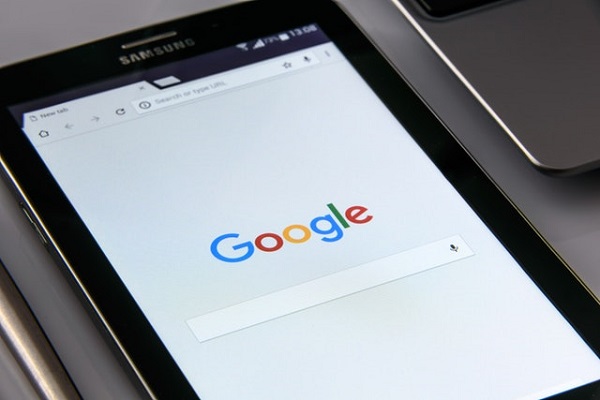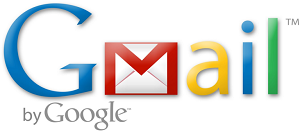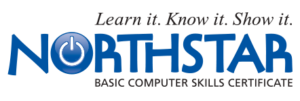- MN ABE Connect
- Archive
- Practical Applications of Technology Integration in the Adult Education Classroom
 September 18, 2018
September 18, 2018
Practical Applications of Technology Integration in the Adult Education Classroom
Miriam A. DeCock, MEd, PGCEdIt’s no secret that today’s global workforce relies more and more on technology every day. And it’s no secret that in the ever-changing and ever-evolving field of adult education, we need to find ways to integrate technology into our classrooms using innovative methods that students understand and can connect to real-world applications. While technology integration may seem daunting, and we find ourselves wondering how we can possibly implement one more thing into the already overwhelming amount of material that must be covered in our classrooms, it doesn’t have to be complicated.
 Knowing that my students needed to implement digital literacy skills in the classroom and beyond, I was excited to take advantage of the Technology Integration Initiative (TII) course offered by the Minnesota Literacy Council; this opportunity came at a time when we had just identified one student as an excellent candidate for the Adult Diploma Program (ADP) option, rather than the traditional GED. As a part of the ADP, students must demonstrate proficiency in digital literacy skills, as outlined by the NorthStar Digital Literacy Standards. Further, mastering the NorthStar Digital Literacy Standards and basic technology skills would be beneficial to all students.
Knowing that my students needed to implement digital literacy skills in the classroom and beyond, I was excited to take advantage of the Technology Integration Initiative (TII) course offered by the Minnesota Literacy Council; this opportunity came at a time when we had just identified one student as an excellent candidate for the Adult Diploma Program (ADP) option, rather than the traditional GED. As a part of the ADP, students must demonstrate proficiency in digital literacy skills, as outlined by the NorthStar Digital Literacy Standards. Further, mastering the NorthStar Digital Literacy Standards and basic technology skills would be beneficial to all students.
The goals of integrating technology in the classroom, as stated in the TII course, are to build learners’ digital literacy skills, accomplish instructional goals such as assessment and differentiation, and to provide learning opportunities that are otherwise unavailable, such as virtual field trips or collaboration across the globe. With these goals in mind, I sought to determine how best to integrate technology in the classroom, in meaningful ways, that would not warrant the learning experiences more cumbersome.
My first question when determining how to integrate technology in the classroom was, “How do I use technology in my everyday life?” I took note of every use of technology I implemented in my day-to-day life for a week, and then determined how to integrate those usages in the curriculum we already implement in the classroom.
 When I have a question, I “Google” it; I go online to check the forecast; I use email to communicate; I use a word processing program to create documents. Technology uses are nearly endless. And my students should know how to take advantage of the vast knowledge, resources, and tools available to them to enhance day-to-day life, too. While the options available are countless, selecting a focus for tools to teach and use was necessary. Most fitting for the specific needs of the students in my classroom is the Google suite of tools and applications; this provided my focus.
When I have a question, I “Google” it; I go online to check the forecast; I use email to communicate; I use a word processing program to create documents. Technology uses are nearly endless. And my students should know how to take advantage of the vast knowledge, resources, and tools available to them to enhance day-to-day life, too. While the options available are countless, selecting a focus for tools to teach and use was necessary. Most fitting for the specific needs of the students in my classroom is the Google suite of tools and applications; this provided my focus.
 As a first step, I spent time guiding students through the process of setting up a Google Gmail account. This email account served as the communication medium with students outside of classroom hours, allowing students to ask questions or send important communications without fear of interrupting or calling at a “bad” time.
As a first step, I spent time guiding students through the process of setting up a Google Gmail account. This email account served as the communication medium with students outside of classroom hours, allowing students to ask questions or send important communications without fear of interrupting or calling at a “bad” time.
I also used this communication tool to send students individual lessons and materials, helping students gain practice with using attachments and affording a unique opportunity to provide individualized instruction, differentiation, and necessary scaffolds for each student. Implementing the use of email in the classroom provides not only an opportunity to guide students to mastery of many digital literacy skills, but saves valuable classroom time as well.
A second method of integrating technology in the classroom is to “Google it!” When students have questions relating to coursework or learning experiences during class time, I often respond with, “let’s look that up and see what the professionals have to say.” This provides an opportunity to practice online research skills and opens the doors for lessons in determining credibility, reliability, and validity of web or Internet sources.
 Finally, mastering information literacy skills is essential for success, as outlined in the NorthStar Digital Literacy Standards. While the information literacy standards are perhaps more in-depth and extensive than the other NorthStar Digital Literacy Standards, these standards can be integrated into more extensive units or learning experiences of sustained duration. I am a fan of project-based learning (PBL); PBL lends well to both the principles and assumptions of adult learning and integration of the information literacy standards. While many PBL project assignments take place over several weeks or even months, the same principles can be applied to projects of a shorter duration.
Finally, mastering information literacy skills is essential for success, as outlined in the NorthStar Digital Literacy Standards. While the information literacy standards are perhaps more in-depth and extensive than the other NorthStar Digital Literacy Standards, these standards can be integrated into more extensive units or learning experiences of sustained duration. I am a fan of project-based learning (PBL); PBL lends well to both the principles and assumptions of adult learning and integration of the information literacy standards. While many PBL project assignments take place over several weeks or even months, the same principles can be applied to projects of a shorter duration.
Some of my students might be conducting research to determine the validity and necessity of a specific law, weighing the benefits and associated drawbacks of such a law to produce an argument essay; other students might be researching the historical foundations of a specific law in order to compose an informative essay; another student might be researching the effects of a specific “fad” diet on long-term health.
Key, however, is that no matter what the topic and ultimate output of the research project is, all students can learn the same information literacy skills throughout the research, analysis, synthesis, and composition processes. Technology affords the ability to provide meaningful learning experiences to all students, at the same time, while working with a topic of individual interest.
Some other ways I integrate technology in the classroom using Google tools:
- Assignments are posted in the Google Classroom LMS
- Students can work on those assignments at their own pace, navigating the online tools and resources
- Students submit written work through the Google Classroom LMS, using Google Docs
- Google Forms are used to conduct various formative assessments
- Use the Explore tool for research and curation…right in Google Docs
- Use the template library to learn correct formats for letters, resumes, etcetera
- Scaffolding—Create lessons using HyperDocs, allowing students to determine what topics they want or need more information about; students can click the links for further reading or move on to the next topic if they feel further reading is not necessary
Through participation in the Technology Integration course, I learned the specific skills necessary to integrate technology into the classroom, gained fresh new ideas for using technology in meaningful ways, and was introduced to a valuable library of classroom resources through the OER commons. The key takeaway from this course for me was that technology tools and resources available are nearly limitless; finding the tools and resources that work for each individual is essential. The ultimate goal of integrating technology is to enhance—not hinder—the learning experience. Thus, we must always ask ourselves, “How can the technology available enhance this learning experience?” The answer to this question should provide the foundation for making crucial decisions relevant to technology integration in the adult education classroom.

Newsletter Signup
Get MN ABE Connect—the official source for ABE events, activities, and resources!
Sign UpArticle Categories
- ABE Foundations/Staff Onboarding
- ACES/Transitions
- Adult Career Pathways
- Assessment
- CCR Standards
- Citizenship
- COVID-19
- Cultural Competency
- Digital Literacy/Northstar
- Disabilities
- Distance Learning/Education
- ELA
- Equity/Inclusion
- ESL
- HSE/Adult Diploma
- Listening
- Math/Numeracy
- Mental Health
- Minnesota ABE
- One-Room Schoolhouse/Multilevel
- Professional Development
- Program Management
- Reading
- Remote Instruction
- Science
- Social Studies
- Speaking/Conversation
- Support Services
- Teaching Strategies
- Technology
- Uncategorized
- Volunteers/Tutors
- Writing